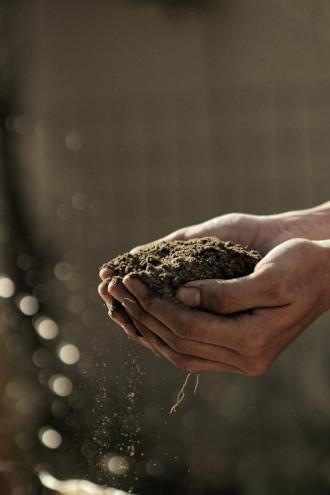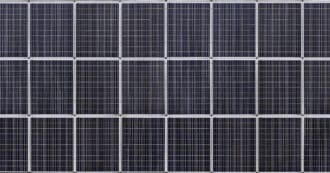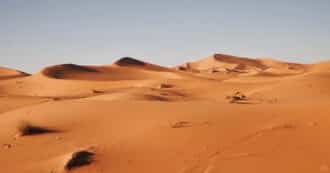By Aryeh Ronay – In chapter 23 of Genesis, we see the death of Abraham’s wife Sarah in Hebron in the land of Canaan at 127 years old. Abraham goes to Hebron to “mourn for Sarah and to weep over her,” and then pursues the practical aspects of burying her. In order to bury her, Abraham wants to buy a piece of land, and asks the local Hittites if he could buy a burial plot from them. Abraham buying land serves two purposes here. One: to purchase land in which his wife, and eventually himself and his descendants can be buried. Two: to ensure his ancestors are rooted in the land not just spiritually, but also in terms of possessing real estate.
The Hittites are eager to accommodate this request, telling Abraham, “you are a mighty prince among us, bury your dead in the choicest of our burial places.” Abraham “rose and bowed” before the Hittites because of their kindness. He then asks them to intercede for him with Ephron son of Zohar, to sell him the “The Cave of Machpelah,” also known as, the “Cave of the Patriarchs.”
Ephron happened to be there at that moment, and offers to give Abraham the cave and surrounding field for free, but Abraham insists on paying, and pays Ephron four hundred shekels of silver for the cave and field. Abraham wants to ensure that by paying for the field it will really be his through a financial purchase in front of witnesses. If the land is just a gift, it can be easier for Ephron or his descendants to later claim that they want their “gift” back. Abraham buries his wife Sarah in the cave, and the chapter ends with a summary of how this cave in the land of Canaan passed from the Hittites to Abraham.
Eco Bible
Sarah and Sustainable Burial from Genesis 23
Genesis 23:4 – “I am a resident alien among you; sell me some property for a burial site among you, that I may remove my dead for burial.”
Abraham seeks to buy land to bury Sarah. While he purchases both a field and cave in Hebron, Sarah was buried in a cave. Rabbeinu Bachaya explains that there was a custom for every family to have their own burial area.1 Contemporary scholar Eldad Keynan explains the Biblical method of burial: “The body was not laid and covered with dust for eternity, like the trench graves practices. Instead, it was laid in a shallow pit or on a shelf for the first year, during which the flesh decayed, while the soul underwent the purifying process. A year after the burial, the relatives returned to the tomb, collected the bones, and put them in stone boxes: ossuaries . . . Now they moved the bones to the ossuary, and put the ossuary in a niche, carved into the tomb wall.”2 Contemporary researchers have identified two major ecological risks posed by modern cemeteries: contamination of local water sources and of the soil.3
Traditional Jewish burial practices in Israel overcame these two issues through burial in a rock cave to minimize water contamination, and through burial in simple cloth, without a coffin or other non-decomposable objects. Modern Jerusalem, a society that lives mostly in urban space and spends most of its time in buildings, now buries many of its dead in multistory structures that resemble parking lots. The main cemetery is next to an urban area and expanded highway, which is common in many cities. A different recent burial design in West Jerusalem’s main Har HaMenuchot cemetery is based on the Biblical method of burying in a cave, but creates crypts that are up to 160 feet underground in order to leave space above ground for the living.4 This may be needed since Israel faces a shortage of 1.5 million burial plots in the coming decades, according to a report from the State Comptroller.5
Relationship with the Earth in Genesis
Genesis 23:13 – And [Abraham] Spoke to Ephron in the Hearing of the People of the Land, Saying, “If Only You Would Hear Me Out! Let Me Pay the Price of the Land; Accept It from Me, That I May Bury My Dead There.”
Rabbi Matis Weinberg explains: God tells humankind in the Creation story that we “will return to the earth for you were taken from it. For you are dust, and to dust you will return.”6 God does not inform people of mortality per se, but of burial: to dust you will return. It is the underlying relationship with the earth that needs to be restored. That relationship, as with a spouse, is not like the use of an object, but rather through the deep connection we make with the other party. It is because we were “taken from the earth” in the first place, that we are able to “return to it” and ultimately to find peace. The Midrash teaches that “God collected the dust for man’s creation from the four corners of the earth, so that wherever he would die he would find his place for burial.”7 The earth, Adama, is the name of our species humankind Adam, just as “human” is drawn from the Latin “humus” meaning “earth.” If we lose sight of that connection we lose all connection to ourselves and to life. Burial is a restoration of that connection.8 To invoke the philosopher Martin Buber, our connection to the earth should not be an I–It relationship, but rather an I–Thou relationship, much like an ideal marriage.9
Reflections on Genesis 23
In this momentous chapter, we find Abraham staking his claim to a piece of the land of Israel through buying his wife a burial plot. This burial plot, the Cave of the Patriarchs, will continue for the next 3,000 years to be a place that the followers of Abraham— Jews, Muslims and Christians— will consider to be their personal stake in the land. This has led to violence and competition, but it can also lead to peace. Recognizing our common heritage in this land, and inspired by our common patriarch, Abraham, we can use the Cave of the Patriarchs in Hebron as a place to come together, as a place to pray together and as a place to recognize that we have more that unites us than divides us.
Sources
1. Rabbeinu Bachaya on Genesis 23:4.
2. Eldad Keynan, “Private vs. Public Burials: Differences and Time Span,” The Bible and Interpretation, The University of Arizona, October 2010, http://www.bibleinterp.com/articles/burial357907.shtml#sdfootnote9sym. Citing Jerusalem Talmud, Mo’ed Katan 1:5, 80d; Sanhedrin 6:10, 23d.
3. Aysel Uslu, Emin Bariş, and Elmas Erdoğan, “Ecological Concerns over Cemeteries,” African Journal of Agricultural Research 4, 13, December 2009, 1505–1511.
4. Sam Sokol, “Squeezed for Burial Space, Jerusalem Prepares an Underground City of the Dead,” The Times of Israel, October 26, 2019, https://www.timesofisrael.com/squeezed-for-burial-space-jerusalem-prepares-an-underground-city-of-the-dead/.
5. Yair Altman, “Shortage of 1.5 Million Graves in the Center of Israel” (in Hebrew), Israel Hayom, March 23, 2020, https://www.israelhayom.co.il/article/744597.
6. Genesis 3:19.
7. Tanchuma, Pekudei 3.
8. Rabbi Matis Weinberg, Frameworks: Genesis (Boston: Foundation for Jewish Publications, 1st edition, 1998), 100–101.
9. Martin Buber, I and Thou (London: A&C Black, 1937).
* Featured image source







